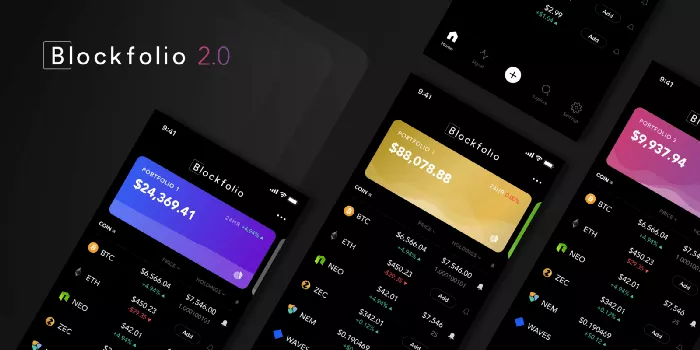Trading
Becoming good at trading takes several years, and it is normal to do bad business in the beginning. Blockchains do not only have to be currencies, but can be other types of projects where the blockchain functions as a decentralized database. For example, they may be focused on the Internet of Things (IoT), gaming, finance or real estate. So investing in a crypto project is a bit like investing in stocks.
To make a good deal, you need to understand the technology behind the project, you need to understand the company behind it, what partners they have, what employees they have, and so on.
For most people, trading is not a big interest, so most people buy cryptocurrencies and keep them for a long time to come. If you believe in a project, you dare to keep it for years. If you are a little more adventurous, you can predict that a project will go well in the short term, and can therefore plan to sell again after a month, a week or in an hour (day trading).
In short, you can find a project you like on, for example, CoinGecko, and check which exchanges it trades on. You make sure to buy a currency that can be exchanged for this project. Moves the currency to the exchange in question, and trades to the currency you want. You do not want to have your currencies with a exchange, but send them to a wallet for which you are responsible.
Common mistakes

Not read up on the project
It's easy to listen to talented people in the industry who recommend crypto projects, and be inspired to buy for that reason alone. Or listening to a colleague who has been working with cryptocurrencies for a while. It does not have to be a mistake, but the whole sphere is filled with opportunists who make great promises. It is always best if you take the time to read up properly before an investment.
What technology is used? What are the benefits? What are the disadvantages? (if they are not mentioned it is a warning bell - everything has a back side). Who is behind the project? Which developers are involved? How often is their source code updated? What partnerships do they have? Etc.
Bet more than you can afford to lose
When you believe great things about a project, you become afraid that you will miss out on big wins in the future, which makes it easy to to invest too much. One should always reckon that one's capital might be lost. Therefore, do not invest money that you can not spare. Do not take out a loan to invest. Do not bet the house or the car. But maybe you can save a few bucks a month?
Follow your emotions too much
Do you have a feeling that Bitcoin will go up in the next month? Emotions do not belong in trading. Try to overlook them as much as you can and invest with logic and understanding. Feel free to wait a few days from the time you are inspired to actually do it - then the feelings may have cooled down a bit.
In the crypto world, the market is certainly more governed by emotions than in the stock market, because so many are opportunists and just folloing other peoples opinions. Technically good projects do not need to have a positive price development at all, when no one understands the possibilities with the project and no one talks about them.
It is also common to be afraid of missing out on getting rich when you see Bitcoin make huge increases suddenly (FOMO - Fear of missing out). After all, last time it happened, maybe it went up 30%, and now it has only had time to go up 10%. But try your best to stay away from this mentality - it's almost always the cause that people lose their investments. Those with patience always take money from those who lack it.
Believe that the crypto market functions like the stock market
To some extent, of course, it does. And human psychology has not changed much in the last hundred years. But the crypto market is like the stock market on steroids and is much more governed by emotions and fears. Things go fast. Really fast. It is perfectly normal for a currency to go up 25% in one day. Or down, for that matter. If you look at the list of all currencies and sort on the highest profit in the last 24 hours, it is not uncommon to see projects that have gone up a thousand times their original price.
Köpa billiga mynt
When you jump into the world of cryptocurrencies for the first time, you could reason that it is smarter to buy Ripple (XRP) than Bitcoin (BTC) because Ripple only costs $0.33 USD while Bitcoin costs $10,000. "What if Ripple goes up to the price of Bitcoin, then I will be a multimillionaire!". But that's not really how things work. You divide the total value of all coins (MarketCap) by the number of coins. In Ripple's case, MarketCap is certainly much lower than Bitcoins, but there are also many more XRPs than there are BTC.
Buying currencies with very low MarketCap is a greater risk, but can of course provide more returns. And then you should bear in mind that all crypto trading already has a much higher risk than stock trading has.
Portfolios
It becomes almost impossible to keep track of how much you have gained or lost after holding on for a while. For example, if you buy Ethereum for $100, send them to Binance, exchange them for 10 NANOs, and after six months, 5 of those NANOs switch to Stellar. Meanwhile, Stellar has gone up 25%, Nano has gone up 50% and Ethereum has gone down 25%. How much have you earned?
In the beginning, you usually try with documents and spreadsheets, but it usually falls flat. If you want to keep track, you need an application that helps someone who is specially made to keep track of your crypto portfolio. You enter which currency you buy and for how many dollar, when you sell or exchange, it keeps track of profit / loss for you. Examples of such applications are Blockfolio and CoinTracking.
